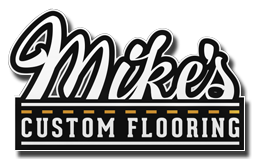For those who have made the decision to put hardwood flooring in their home, you will be faced with a few decisions. These decisions include the type of material the flooring is made of as well as the look and color of the wood. Most importantly, you will have to decide on the type of underlayment you will use. The underlayment of the wood floor plays a vital role in different ways. Mikes Custom Flooring will provide understanding as to the underlayment and the different types of underlayment you can choose from.
Layers of Wood Flooring in a House
When it comes to wood floors, especially when it comes to laminate floors, which are growing ever more popular, they typically consist of three layers. The top layer is the floor covering, or in other words, the laminate, wood or even the vinyl surface of the floor. The second layer is the underlayment that is set between the wood and the bottom of the floor. The third layer is the flooring itself.
Is Underlayment Necessary for Hardwood Floors?
Some will wonder why the second layer is important. Why does wood flooring need an underlayment anyway? There are several reasons why wood flooring needs underlayment. The first one is that the underlayment provides a smooth surface for the wood or the first layer to rest on. In most cases, the floor or bottom layer is uneven and may have a few dips and divots all through the flooring area. The underlayment is typically made of a foam material that pads and fills in the uneven areas, making the bottom of the flooring smoother and even. Another reason for underlayment is sound reduction. Wood floors with a thin or no underlayment make a lot of noise. You can be walking on the floor without shoes and each step still echoes. Again, the noise is due to the uneven bottom flooring. When there is divot or dips in the foundation, it creates a small hollow. Since the wood floor will typically flex, each step will cause the wood to tap the bottom which creates the echo and all the noise. The underlayment also helps make the bottom layer more stable for the wood to lay on, which prevents future separations.
Types of Hardwood Floor Underlayments
During construction there are different types of underlayments used when wood flooring is being installed. Plywood is one of the types of underlayment. However, it isn’t popular or commonly used. Plywood does provide a smooth surface but can be difficult to install. OSB is another similar material compared to plywood that is also used as underlayment. Another underlayment material that can be used for hardwood flooring is Underlayment Panels. These panels interlock together in larger piece that provide a smooth surface for the wood floor to rest on. Additionally, underlayment panels help make the installation go in quicker and acts as a moisture barrier. However, underlayment panels can be a little expensive, especially in large rooms. The last type of underlayment which is most commonly used is the foam or cork underlayment. Depending on the thickness of the foam or cork padding used, it can greatly reduce the noise and provide moisture protection as well. These types of underlayment come in large rolls that are cut to fit the room.
Hardwood Floor Installation & More in Charles Town & Eastern Panhandle of Berkeley & Jefferson Counties in WV | Winchester & Frederick County | Round Hill & Loudoun County | Berryville & Clarke County | Herndon & Fairfax County VA
The underlayment is an important aspect of the wood floor and needs as much consideration as the wood or surface type of material that you wish to install. If you need help choosing the right kind of underlayment for your home and the wood flooring you chose to install, contact Mike Custom Flooring. We can help advise you as to the best underlayment and installation of your wood flooring.





